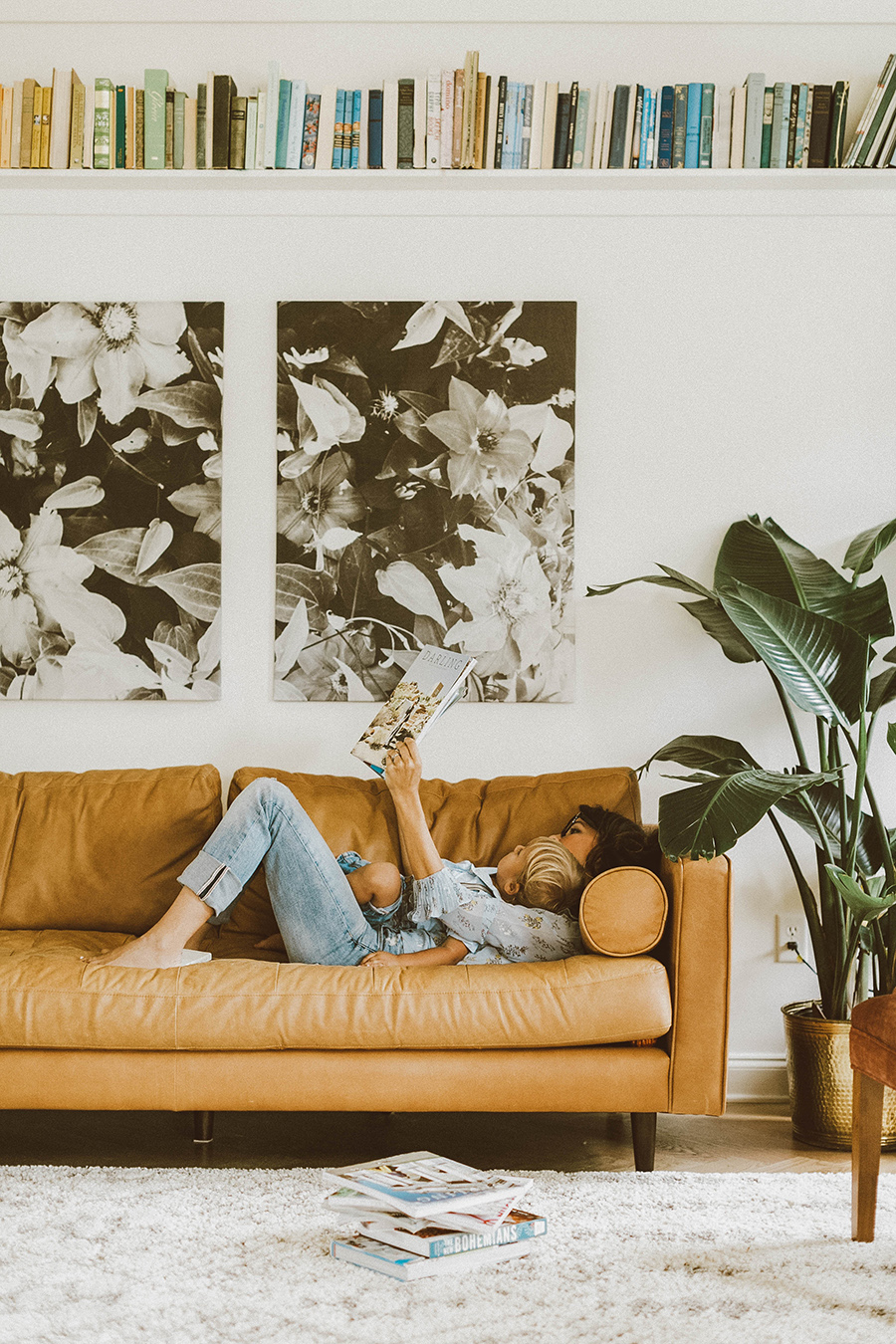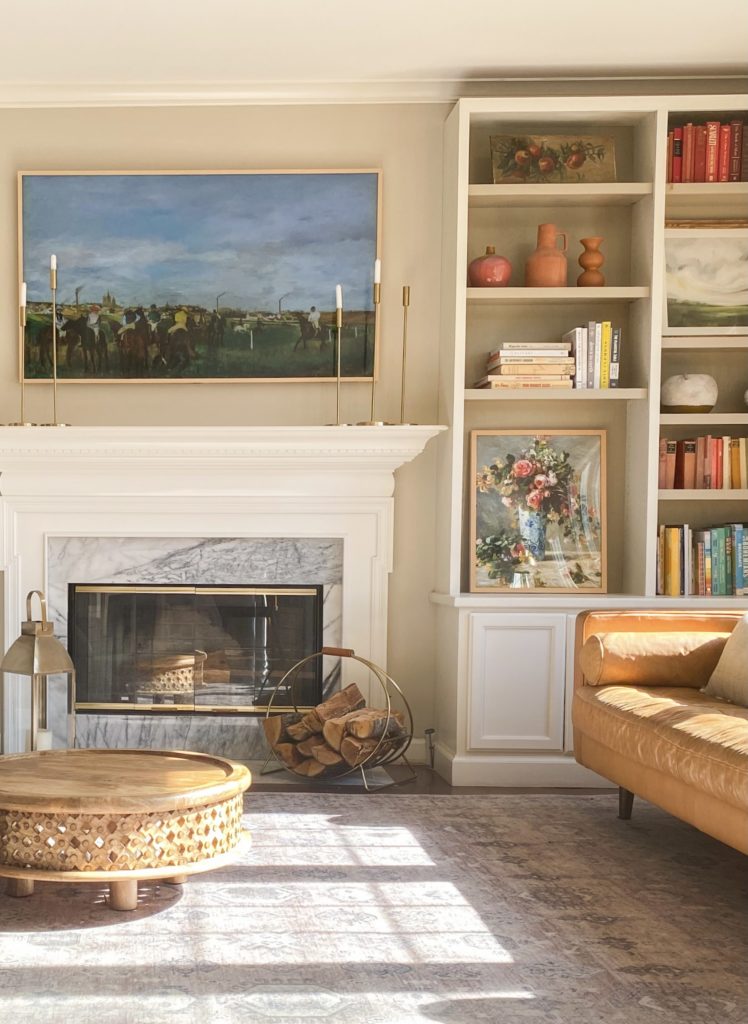
We’ve been meaning to share with you all how we created these large DIY picture ledge and DIY bookshelves, so Gabe is here today to explain his process for you to try on your own. Easier than you think!
Don’t worry! I’m breaking this down in to simple steps so that even the most hesitant of you homeowners and renters can feel confidant in trying this out. If you have any questions we will answer them in the comments below!

MATERIALS
Wood Glue (I love Titebond III)
1.25in or 1.5in wood screws or drywall screws
1×8 board
1×3 board
Note on selecting your wood: When purchasing dimensional lumber always check the lumber for warping. Selecting the straightest possible boards makes for an easier build.
TOOLS
Bar Clamps – (opening must accommodate at least 3.5 in of material)
C Clamps
Corner Clamps – useful but not necessary
Wood Glue
French Cleats
Power Drill
Power Sander
INSTRUCTIONS
This is an easy build and a good introduction to basic wood craft. In a nutshell, all you are looking to do is securely mount the 1×3 to the underside of your 1×8 pieces of wood.
1. Start by cutting your boards to the desired shelf length. (Both the 1×8 and 1×3 boards should be cut to the same length.)
2. Lay your 1×8 down on a raised work surface (such as work bench or saw horses) and run a line of wood glue 1/2in from the edge nearest to you.
3. Place your 1×3 along the glue line and line up the edges of the two boards. Next Clamp the two boards together. To help ensure the two boards are at a 90 degree angle, you can clamp wood blocks in the inside joint of your two boards, or simply use a corner clamp at each end of the shelf.
4. To prevent the wood from splitting, pre drill the screw holes using a 1/16in, 5/32in, or 1/8in drill bit.
5. Now that the shelf has been glued and clamped, flip the shelf over so that the 1×3 is on the underside of your 1×8. Use your wood or drywall screws to further secure the boards together by driving them through the 1×8 into the 1×3. I like to space the screws roughly 15 to 18 inches apart.
6. Once the screws have been inserted, remove the clamps and wipe up any glue that was squeezed out of the joint. I like to sand down all corners to give the shelf a cleaner/softer look.
At this point your shelf is ready to paint or stain, just be sure the glue has dried.

HANGING THE SHELVES
We hung our shelves using two different methods.
1.The first shelf we hung by using French cleats secured directly into your wall studs. This method is beneficial if you are placing light weight objects on your shelf, and you do not want to have your shelf permanently hung.
2. The second shelf we hung by securing the shelf directly to the wall studs by drilling through the lower board of the shelf. This requires you to fill in the screw holes with a filler then paint over the holes if you do not want them visible. This method allows you to place much more weight on the shelves, but is more of a permanent mount on the wall.
If you give this a try, be sure to show us your work! We love seeing these projects in your homes. Go get ’em tiger!






















